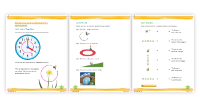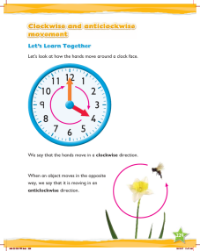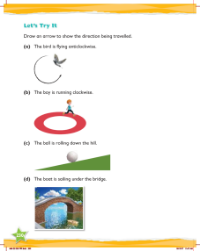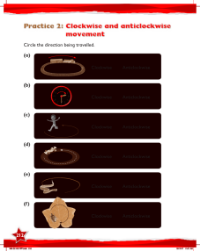Max Maths, Year 3, Practice, Clockwise and anticlockwise movement

Maths Resource Description
In a practical exercise designed for Year 3 students learning about spatial awareness and direction, Max Maths introduces an activity that combines visual recognition with understanding of positional language. The task requires students to draw lines connecting descriptive sentences to the corresponding images, thereby reinforcing their comprehension of relative positions. This activity includes various scenarios such as identifying the location of a flower in relation to a cube—whether it is behind, next to, or on top of it—as well as determining the position of a star in relation to a group of triangles, such as at the bottom, to the left, or in the middle. This interactive task not only helps children grasp concepts of clockwise and anticlockwise movement but also enhances their ability to follow and give directions based on spatial orientation.
The exercise is laid out in a clear and engaging manner, encouraging students to analyze each sentence and match it to the correct visual representation. For example, they must discern where the flower is positioned in relation to the cube and where the star is situated amongst the triangles. By engaging with this activity, students develop a more intuitive sense of spatial terms and their practical applications. The instructions also guide the students to continue their practice on page 212 of their workbook, ensuring that the learning process is structured and continuous, allowing for reinforcement of the key concepts covered in the lesson.



